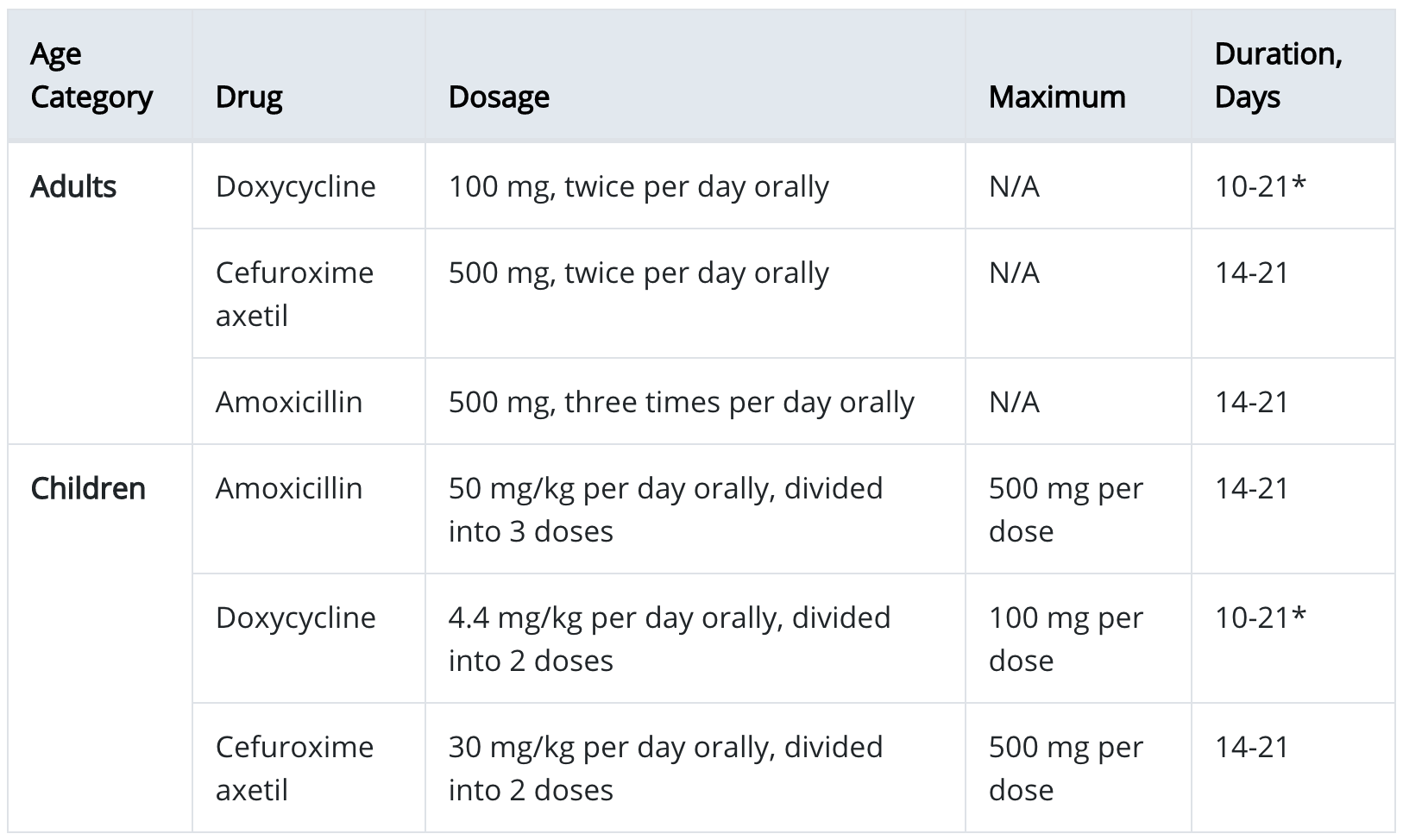The standard treatment for Lyme disease is oral antibiotics. The first line antibiotic used is typically doxycycline. This is because doxycycline is also active against another agent that can be co-transmitted, Anaplasma phagocytophilum, and also because, of the oral antibiotics, doxycycline achieves the highest level in the brain where the bacteria often hide.
There are side effects to doxycycline. The most common is one called photosensitivity, which is a fancy way of saying that if you go out into the sun while taking doxycycline, you could end up with a really bad sunburn. Doxycycline did not used to be recommended for children under 8 over fears of it discoloring their teeth the way a related drug, tetracycline, does. However, it turns out that doxycycline is more like a distant cousin than a sister so now it is okay for children to take doxycycline for a couple of weeks.
If you really can’t take doxycycline, your doctor may prescribe a different antibiotic. Other commonly used antibiotics include: amoxicillin, cefuroxime (Ceftin), and azithromycin. All of these antibiotics work well and the majority of people taking any of these antibiotics improve on treatment.

